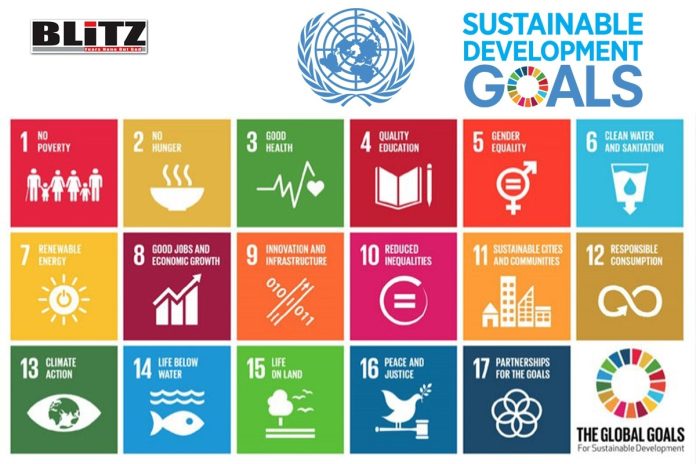In the ever-evolving realm of global development, Bangladesh stands out as a shining example of innovation and steadfastness in its commitment to achieving the Sustainable Development Goals (SDGs). Embracing these ambitious objectives in 2015 marked the beginning of a multifaceted journey for the nation, emphasizing the vital importance of adapting global agendas to fit local circumstances, obstacles, and aspirations. Through localization efforts, Bangladesh has demonstrated its unwavering determination to address its unique challenges while aligning with the broader vision of sustainable development.
At the heart of Bangladesh’s strategy lies a comprehensive institutional and structural framework, meticulously crafted to facilitate the effective implementation of the SDGs. This framework encompasses a plethora of measures, ranging from the formulation of a National Action Plan delineating the responsibilities of various ministries to the establishment of a results-oriented monitoring and evaluation framework, epitomized by the SDG Tracker. Moreover, Bangladesh has placed a premium on inclusivity and collaboration, fostering multi-stakeholder engagement at every echelon of decision-making and execution, thereby ensuring a holistic and participatory approach to development.
At the heart of Bangladesh’s localization efforts lies a fundamental focus on pinpointing priority indicators meticulously tailored to the nation’s distinct requirements and ambitions. Led by the Governance Innovation Unit (GIU) within the Prime Minister’s Office, and in collaboration with pivotal stakeholders such as the General Economic Division and the Bureau of Statistics, Bangladesh has diligently crafted a comprehensive array of contextualized indicators. These indicators span various levels, encompassing the national, district, and upazila tiers. Through this meticulous process, Bangladesh ensures that its developmental agenda is finely attuned to the specific challenges and opportunities inherent within its diverse landscape.
The process of discerning these indicators has been characterized by rigorous research, stakeholder mapping, and extensive consultations, ensuring thoroughness and inclusivity. At the national level, thematic areas such as poverty alleviation, food security, education, health, economic growth, infrastructure, women’s empowerment, and environmental protection have been earmarked as priority domains. For instance, cognizant of the imperative of preserving cultivable land amidst escalating land degradation, an indicator has been set to maintain cultivable land at a minimum of 55% of the total land.
In striving to rectify gender imbalances in economic engagement, one indicator endeavors to elevate women’s participation in productive endeavors to 50%. Additionally, recognizing the paramount importance of fiscal stability, another indicator sets its sights on increasing the ratio of total government revenue to GDP to 20%. These metrics not only reflect the urgent developmental needs of Bangladesh but also harmonize with the overarching objectives of the SDGs, fostering alignment and synergy in the pursuit of sustainable development. By prioritizing these indicators, Bangladesh not only addresses its internal challenges but also contributes meaningfully to the global agenda for a more equitable and prosperous future.
Bangladesh’s localization paradigm exemplifies the transformative potential of context-specific approaches in achieving global objectives. By prioritizing interventions grounded in local needs and capacities, Bangladesh endeavors to optimize the impact of its development endeavors, ensuring inclusivity and equity. Moreover, the identified indicators serve as invaluable compasses, steering development planning and resource allocation across all tiers of governance.
As Bangladesh advances in its journey towards sustainable development, the current emphasis shifts towards effectively integrating and institutionalizing these priority indicators into national policies and programs. The true measure of success for Bangladesh’s localization efforts will extend beyond merely achieving these indicators to observing their tangible impact on the lives of its citizens, especially those within the most marginalized and vulnerable demographics. With the 2030 deadline looming, the global community accelerates its efforts. Bangladesh, positioned at the forefront, is ready to demonstrate the transformative power of localized strategies in realizing a future characterized by equity, resilience, and prosperity for all. By prioritizing the implementation and integration of these indicators into its governance framework, Bangladesh showcases its commitment to not only meeting global targets but also fostering sustainable change at the grassroots level, thereby paving the way for inclusive development and enduring progress.
Bangladesh’s steadfast dedication to localizing the SDGs underscores its leadership and innovation in the global development arena. Through the harmonization of global ambitions with local contexts, Bangladesh has established a foundation for comprehensive and enduring development, setting an inspiring example for nations across the globe. As Bangladesh tackles the intricate challenges of sustainable development, its localization initiatives serve as a compelling affirmation of the efficacy of leveraging indigenous solutions in charting a course towards a more sustainable and promising future for forthcoming generations. In embracing the principle of localization, Bangladesh not only demonstrates its commitment to sustainable progress but also illuminates a pathway for global cooperation and collective advancement towards shared prosperity and well-being.




